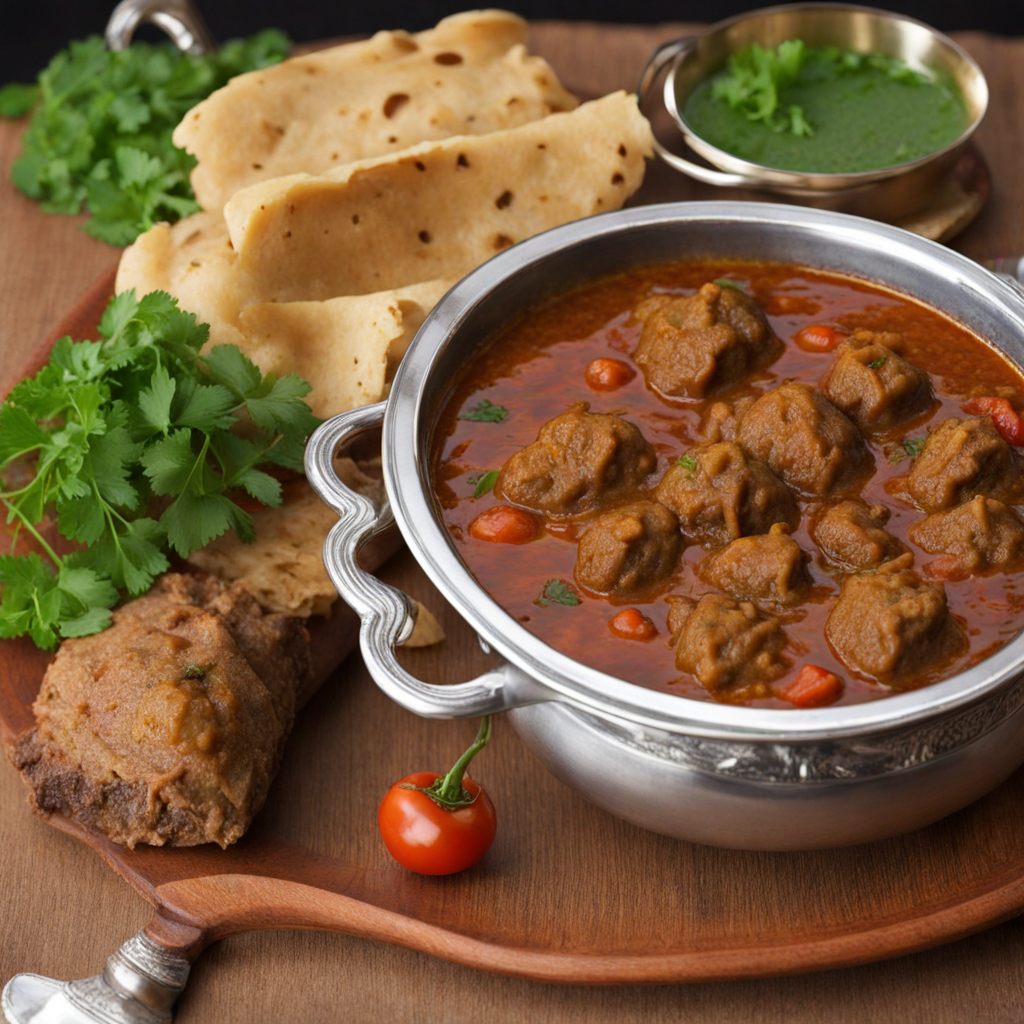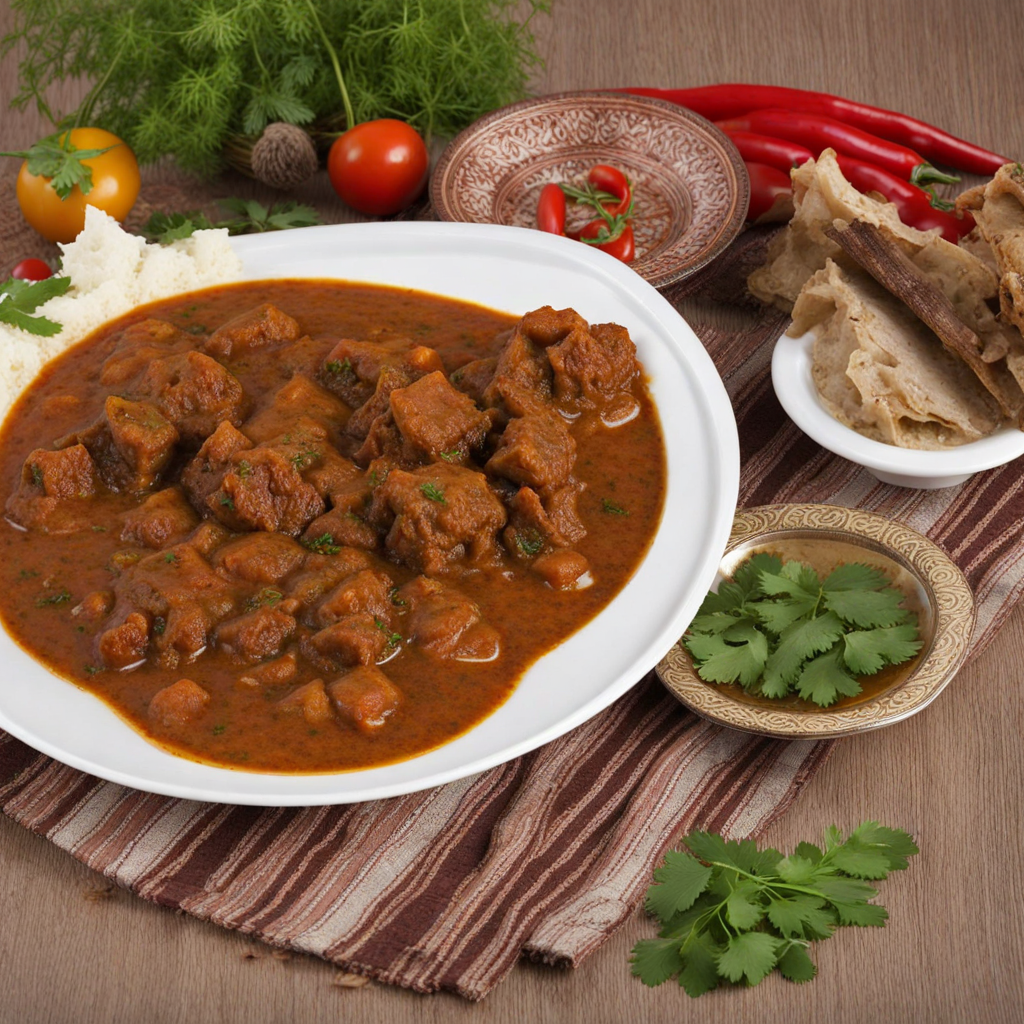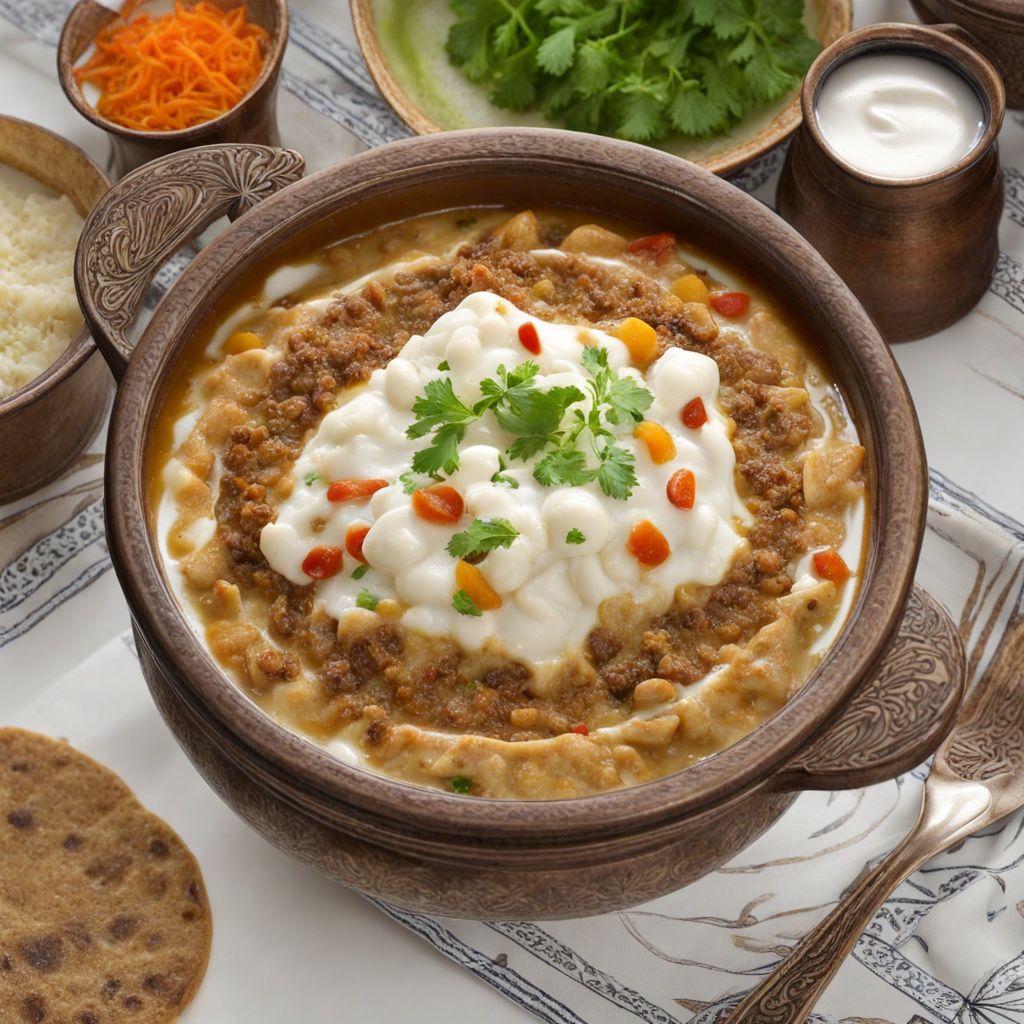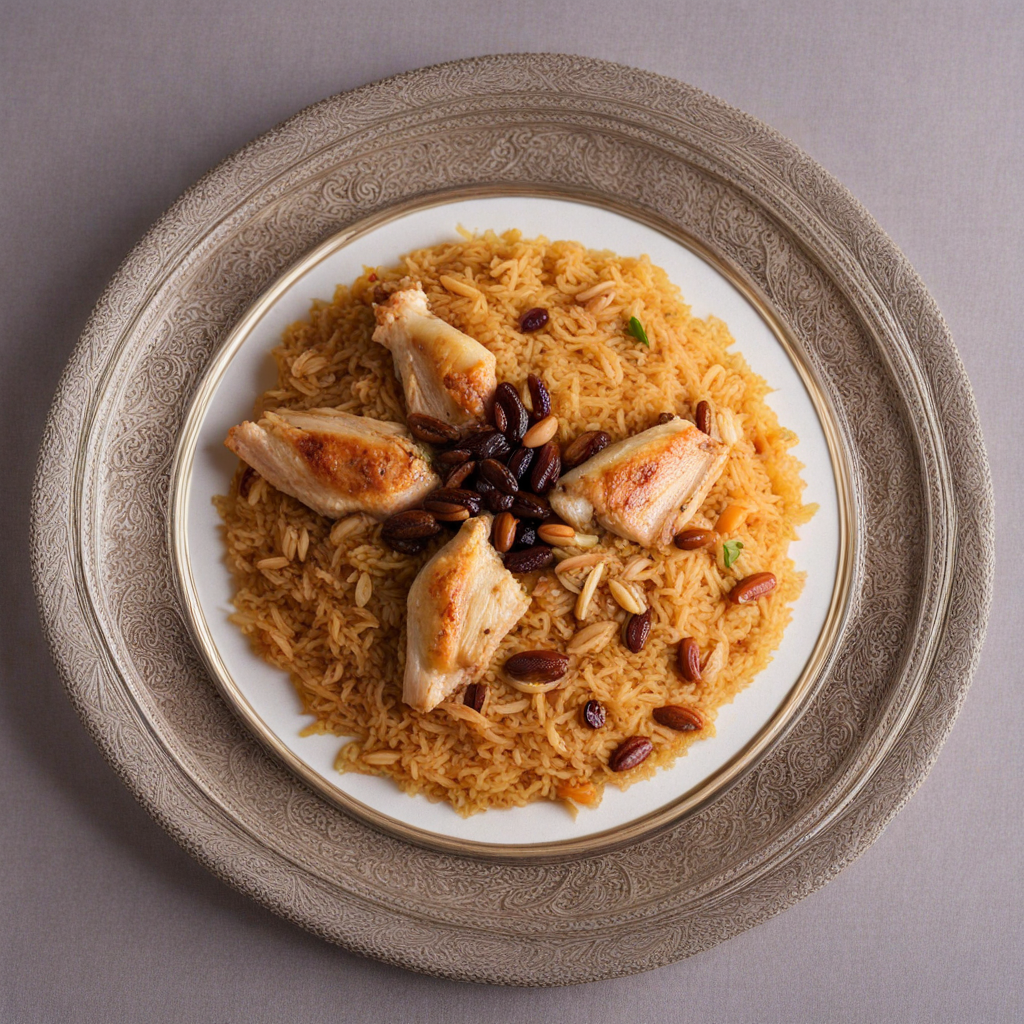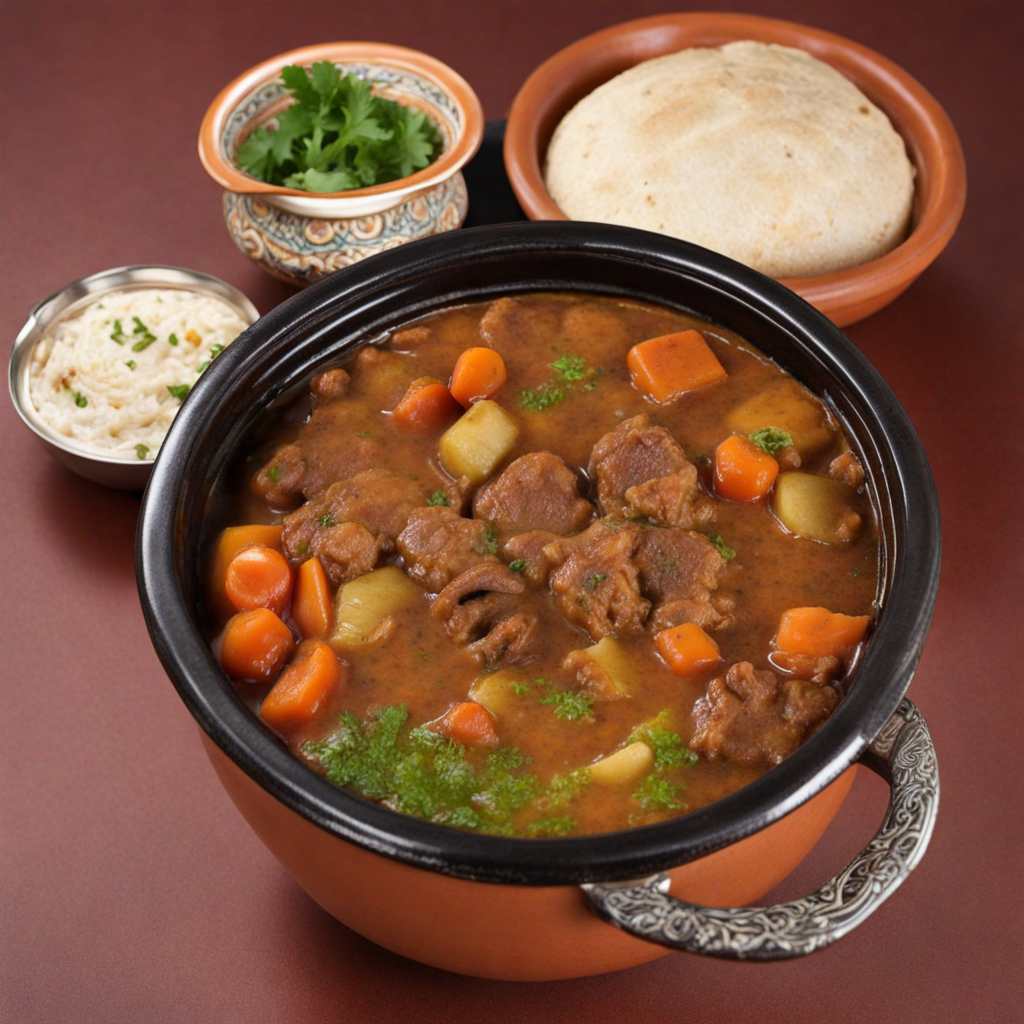Fahsa
Fahsa is a traditional Yemeni dish that embodies the rich culinary heritage of the region. It consists primarily of tender chunks of meat, typically lamb or beef, slow-cooked with a variety of aromatic spices that infuse the dish with a deep, complex flavor. The meat is often simmered in a broth made from tomatoes, onions, and garlic, creating a warm and inviting base. The use of spices such as cumin, coriander, and turmeric gives Fahsa its distinctive taste, making each bite an explosion of flavor that dances on the palate. The dish is known for its hearty and comforting qualities, perfect for sharing among family and friends during gatherings. One of the unique aspects of Fahsa is its preparation and presentation. Traditionally, the dish is served in a communal pot, allowing diners to scoop out portions and enjoy it with their hands. A popular accompaniment is flatbread, which is used to scoop up the tender meat and flavorful sauce. Many people also enjoy Fahsa with a side of rice or lentils, adding to the texture and heartiness of the meal. The dish is often garnished with fresh herbs, such as coriander or parsley, adding a burst of freshness that complements the rich, spiced flavors. As you explore Fahsa, you’ll find that it’s not just about the taste, but also the experience of sharing a meal that tells a story of Yemeni culture and hospitality. The slow-cooked nature of the dish allows for deep flavor development, making it a wonderful choice for a cozy dinner or a festive occasion. For those seeking to discover a new taste adventure, Fahsa offers a delicious glimpse into the vibrant and diverse world of Yemeni cuisine, making it a must-try for food lovers everywhere.
How It Became This Dish
The Rich History of فحسة (Fahsa) in Yemen Fahsa, a traditional Yemeni dish, is a vibrant reflection of the country’s rich culinary heritage, embodying the flavors, traditions, and cultural significance that have evolved over centuries. As a staple in Yemeni cuisine, Fahsa is not just food; it is a symbol of hospitality, community, and the deep-rooted customs of the Yemeni people. #### Origins of Fahsa Fahsa is believed to have originated in the highlands of Yemen, particularly in regions like Sana’a and Taiz, where the dish has been prepared for generations. The name "Fahsa" itself derives from the Arabic word "فحس" which means to mash or crush, reflecting the dish's preparation method. Traditionally, Fahsa consists of shredded lamb or beef, mixed with a blend of spices and served with a rich broth. The meat is cooked until tender, then pounded into a paste-like consistency, infused with the characteristic Yemeni spice mix known as "Hawaij," which includes cumin, coriander, and black pepper. Yemen's geographical diversity plays a significant role in shaping its cuisine. The country's mountainous terrain, fertile plains, and coastal regions contribute to the availability of various ingredients, from fresh herbs to spices and meat. The use of traditional cooking techniques, such as slow-cooking over an open flame, enhances the flavors and textures of Fahsa, making it a cherished dish in Yemeni households. #### Cultural Significance Fahsa holds a special place in Yemeni culture, often served during communal gatherings, family celebrations, and religious holidays. It is particularly popular during Ramadan, when families come together to break their fast. The dish is typically enjoyed with "tannoor" bread, a traditional flatbread that complements the rich flavors of the Fahsa. The act of preparing and sharing Fahsa is steeped in symbolism and tradition. In many Yemeni households, the preparation of Fahsa is a family affair, where each member contributes to the cooking process. This communal aspect reinforces social bonds and creates a sense of belonging. When served, Fahsa is often placed in a communal bowl, encouraging diners to share and enjoy the meal together—an embodiment of the Yemeni value of hospitality. Fahsa is also linked to the concept of "Ghabra," a traditional Yemeni gathering where friends and family come together to share food and stories. During these gatherings, the preparation of Fahsa becomes an event in itself, often accompanied by lively conversation, laughter, and the exchange of cultural narratives. #### Development Over Time Over the years, Fahsa has evolved while remaining true to its roots. The introduction of new ingredients and variations has expanded the dish's repertoire. While traditional Fahsa features lamb or beef, modern interpretations may include chicken or even seafood, reflecting Yemen's coastal influences. These adaptations showcase the versatility of the dish and the creativity of contemporary Yemeni cooks. The globalization of food culture has also impacted Fahsa's presence beyond Yemen. As Yemeni diaspora communities establish themselves in various parts of the world, they bring with them their culinary traditions. Fahsa has begun to gain recognition in international food circles, with Yemeni restaurants showcasing the dish to new audiences. Chefs often experiment with presentation and ingredients while attempting to preserve the authentic essence of Fahsa. In recent years, the ongoing conflict in Yemen has brought significant attention to the country’s food culture. As the humanitarian crisis deepens, the importance of traditional dishes like Fahsa has gained prominence as symbols of resilience and cultural identity. Many Yemeni expatriates have turned to social media to share recipes and stories about Fahsa, fostering a sense of community and connection among those far from home. #### Ingredients and Preparation The preparation of Fahsa is an art form that requires skill and patience. The primary ingredients typically include: - Meat: Traditionally, lamb or beef is used, cut into chunks and slow-cooked until tender. - Spices: The cornerstone of Fahsa is the spice blend known as Hawaij, which varies by region but commonly includes cumin, coriander, turmeric, and black pepper. Some variations may also incorporate fenugreek or cardamom. - Herbs: Fresh herbs such as cilantro and parsley are often added for a burst of flavor. - Broth: A rich broth made from the meat and spices serves as the base for the dish, enhancing the depth of flavor. The cooking process begins with browning the meat in a pot, followed by the addition of water and spices. The mixture is simmered for hours until the meat is fall-apart tender. Once cooked, the meat is removed and shredded before being pounded into a paste. The broth is then reduced to concentrate the flavors, and the pounded meat is returned to the pot to meld with the aromatic broth. #### Conclusion Fahsa is more than just a dish; it is a celebration of Yemeni culture, history, and community. Its origins rooted in the highlands of Yemen, Fahsa has transcended time and geography, evolving while preserving its essence. As it continues to be enjoyed in homes and restaurants around the world, Fahsa embodies the resilience of the Yemeni people and the richness of their culinary traditions. In every bite of Fahsa, there lies a story—a story of a people who have weathered storms, preserved their identity, and shared their love through the universal language of food. Whether enjoyed in a bustling Yemeni kitchen or a quiet dinner table, Fahsa remains a symbol of warmth, togetherness, and the enduring spirit of Yemen.
You may like
Discover local flavors from Yemen


